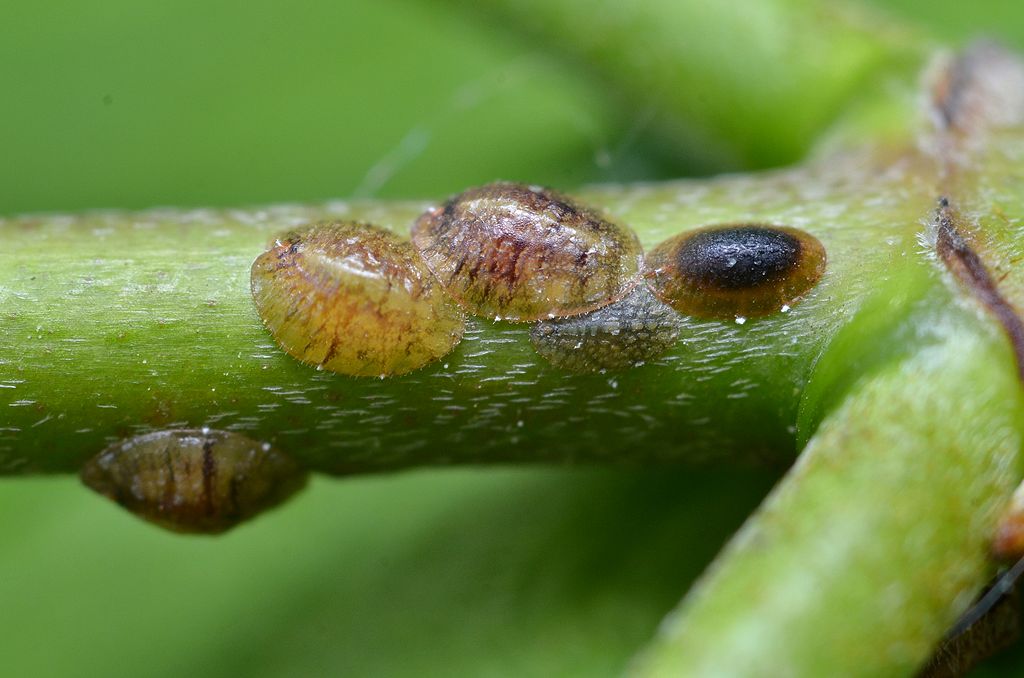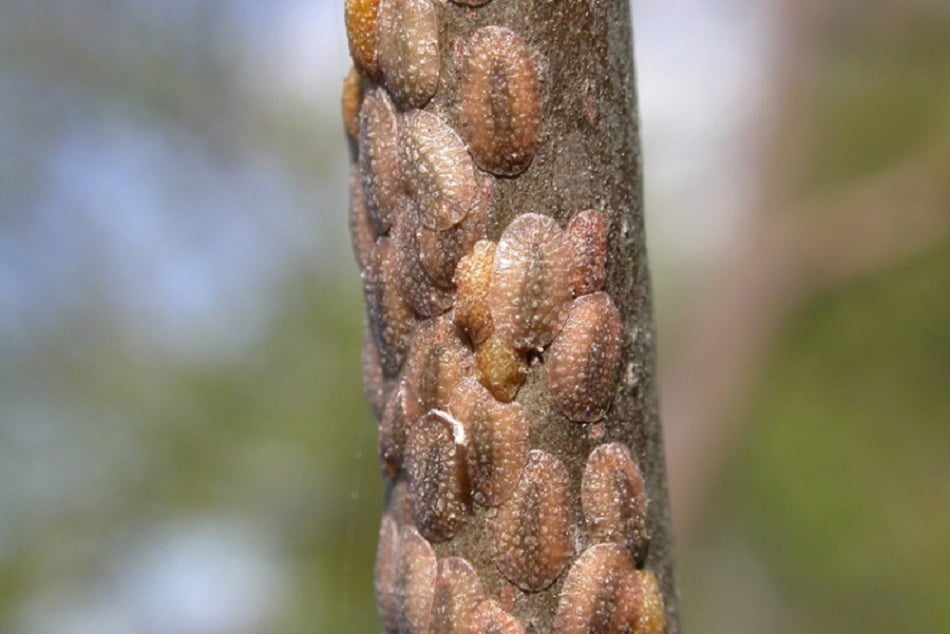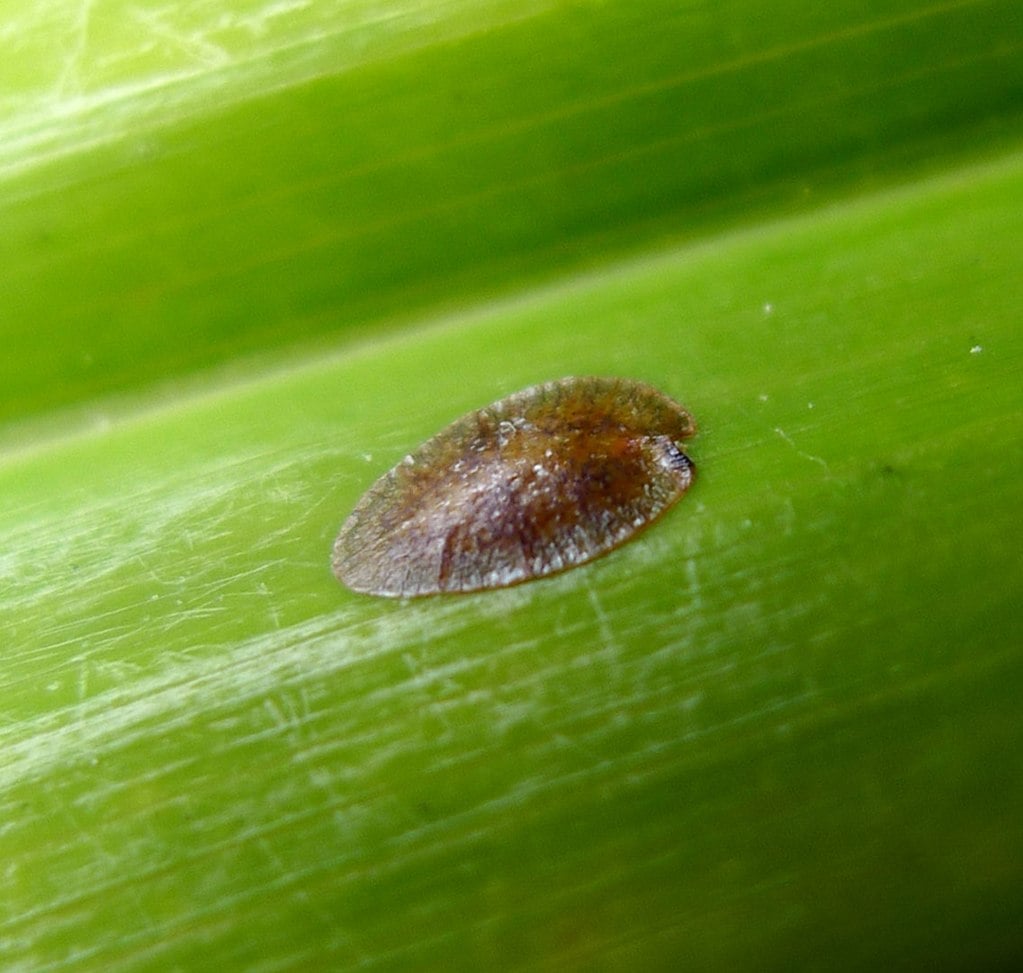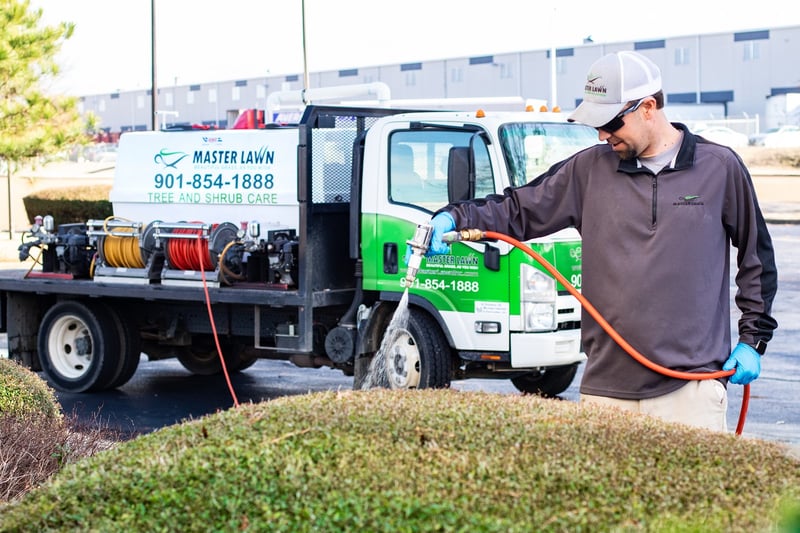
Have your trees and shrubs lost their vigor? Are they experiencing premature leaf drop or stunted growth? It’s possible that something might be sucking the life out of your trees and shrubs—literally.
Scale insects are sap-sucking pests that use their piercing mouthparts to feed on plants by sucking the sap out of them. An infestation could mean a slow death for your beloved trees and shrubs if you don’t step in to help.
Fortunately, there are solutions.
Understanding more about scale insects in Memphis, TN or Olive Branch, MS can help you to make wise choices that will protect and even save your trees and shrubs.
We already mentioned that scale insects are sap-feeding pests. They get their name from the scale that covers their bodies. It’s actually a shell-like waxy covering. There are many different species of scale. We tend to find a lot of scale insects on hollies in our area.

You might find scale on tree branches, stems, or foliage, depending upon the species you’re dealing with. Scale insects do not move around much. Once they find the place they plan to feed, they remain firmly attached there.
Different species can be different sizes but they usually range between ⅛ to ¼ inch. They typically just look like a “bump” on a branch or a leaf but when you start seeing a lot of these “bumps” it can become pretty noticeable.
Another telltale sign of a scale infestation is seeing a sticky substance on your trees and shrubs. This substance is called “honeydew” and is a sugary liquid that scale may excrete while feeding. If you don’t spot the honeydew, you might spot black sooty mold, a fungus that can start growing atop honeydew.
Honeydew can also attract other pests to your tree and shrubs like flies or ants. An increase in this type of pest activity can also be a sign of a scale infestation.
Understanding the scale insect lifecycle will help give you a sense of how an infestation can rapidly become a major problem.
Most types of scale lay eggs. Nymphs are born from the eggs and commonly referred to as “crawlers,” as scale insects are mobile in this stage. They’ll crawl around the plant, looking for the ideal place to begin feeding.

Once they find their location, they stay put. They may even stay in that same location for the remainder of their lifespan. Both crawlers and adults feed on the plant.
Unfortunately, scale insects reproduce quickly and you can have as many as 1 to 4 generations of scale each year based on the species and the weather conditions. This means that what might seem a minor scale problem can become a major one rather quickly.
Scale can be difficult to treat as a result of the waxy covering that they have on their bodies. This covering provides a protective barrier that prevents traditional insecticide products from working on them.
For this reason, we need to take a multi-pronged approach.
This can include spraying scale insects to coat the insects and ultimately smother them (as their shell protects their bodies). However, with certain types of scale, we also need to perform injections. The use of soil-injected products will get absorbed by the root system and translocated to the plant’s bark, buds, leaves, and needles.
When you have multiple generations of scale feeding on your plant at once, it can be a tough battle to fight. It’s important that these professional applications of product are timed when new generations of scale crawlers have hatched and are less protected than their adult counterparts.
Treating scale insects is generally part of our Plant Health Care program. However, Crape Myrtle Bark Scale (CMBS) requires a specialized treatment that is not included as part of this regular program. CMBS don’t show up every year—and some trees are lucky enough to never be infested—so we don’t want to charge our clients for specialty products when they may never need them.
However, rest assured that if you do end up having a CMBS infestation, we can help spot them early and get treatment underway.
At the end of the day, scale insects are just one threat amongst many. Landscapes are regularly attacked by not only various pests but also diseases. Plus, it’s not uncommon for plants in a landscape to struggle from nutrient deficiencies or weather-related conditions.
The answer to combating these stressors is Plant Health Care.

When you choose Plant Health Care for your landscape, it means you’re partnering with a professional who will be keeping an eye on your plants. They’ll take proactive measures where they can to mitigate your risks. They’ll also act quickly when they do spot early signs of a problem.
Ultimately, that could be the difference between saving your trees and shrubs from not only scale insects, but other threats as well.
By making an investment in a Plant Health Care program from a company that you can trust, you can stop worrying that you are going to lose your plants to scale insects or other common problems in Tennessee and Mississippi. Instead, you can gain valuable peace of mind that you’re in good hands.
Ready to invest in protecting your trees and shrubs from pests? Request a quote, get your customized plan, and become the master of your landscape.
Image sources: scale on stem, scale on tree, scale on plant
Michael Hatcher is president of Michael Hatcher & Associates.
These Stories on Insects & Pests
8255 Center Hill Rd
Olive Branch, MS 38654
8164 MS-178
Olive Branch, MS 38654
Phone: (901) 445-9336
Fax: (901) 853-7353
Copyright © Master Lawn | All Rights Reserved.